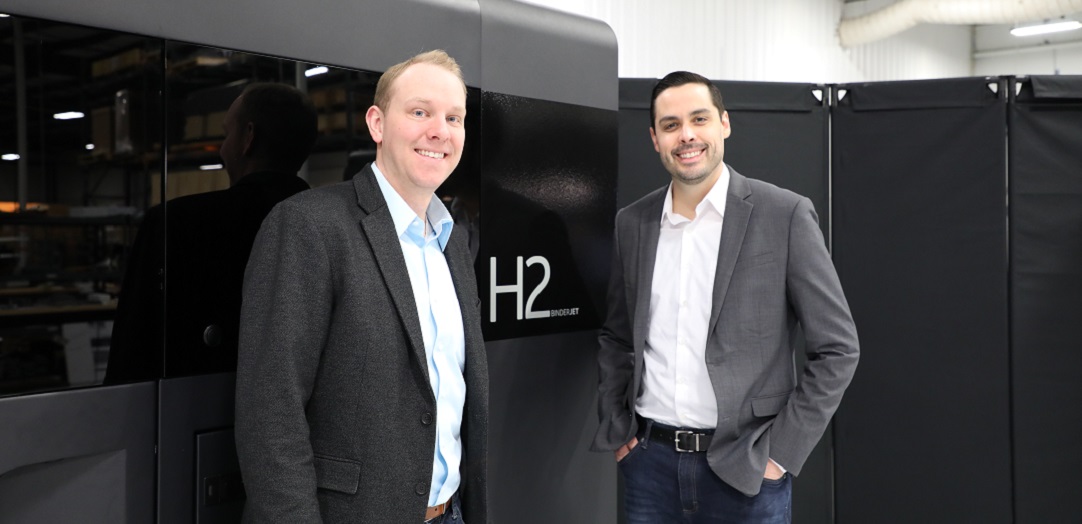After announcing two agreements with Cummins Inc. and Wabtec Corporation, GE Additive’s Jake Brunsberg and Josh Mook share what we can expect from the Binder Jet team in the short to mid-term.
Binder Jet is back then?
Josh: It never went away. But you’re right, about eighteen months ago we gave folks a sneak peek of a very early beta machine. Since then we’ve spent a lot of time talking to customers about Binder Jet, hearing their pain points, their investment concerns, and of course looking at the market potential and where we would fit in.
Jake: And we heard the same themes over and over; cost obviously, but also importance of productivity, reliability, volume and the ability to build large parts quickly.
Why is having a factory solution important?
Jake: Our approach to Binder Jet is making mass production with additive a reality in every industry. And while it would be “relatively” easier to launch individual machines, we heard from automotive customers loud and clear, that they need a complete solution, that gives them scale.
Josh: Actually, with early adopter industries like aerospace and medical who are a little further along with additive serial production, the shift to a solution approach is more common place. This need for repeatability and reliability is a good indication of how additive is maturing and become more widely-accepted in industry.
You often hear automotive and Binder Jet together – why do they complement each other?
Josh: Aerospace and medical industries are the primary users of metal additive manufacturing today because there are limited opportunities in other industries to produce economically viable parts at scale. Binder Jet technology’s capital cost to throughput ratio, as well as a significantly lower raw material cost, changes that, enabling it to take on traditional manufacturing techniques head-on in the largest manufacturing segments.
Jake: Marry all of that with a massive shift going on in automotive, and you have a true game changer. Enabling additive design for mass production in automotive unlocks the ability to create novel solutions in engine efficiency, electrification, and NOx reduction. While addressing the big issues we face today, additive can reduce inventory and transform traditional supply chains.
What’s the go-to-market strategy for Binder Jet?
Jake: The shift from prototyping to serial production is already well underway in several sectors. So, it’s only right for us to set realistic expectations with customers looking to invest in Binder Jet – again, especially in the automotive sector - and only bring solutions to market, that we know are reliable and can have a business impact from day one.
Josh: We’re already working closely with our strategy partners and customers on the handful of H2 beta Binder Jet machines we have up and running in Cincinnati. Eventually, these machines will be relocated to customer’s production facilities, but throughout 2019 we will continue to develop the H2 machines into pilot lines and then eventually into a commercially available factory solution in early 2021.
How did Cummins and Wabtec get involved?
Jake: Once we decided on this collaborative strategy and intention to work with strategic customers and partners, we actively sought out those companies who are known to embrace innovation and are early adopters on new technology.
Josh: Some like Wabtec (until recently GE Transportation) were sort of already in our back yard and were working with us and our team at GRC on additive projects, others like Cummins were a natural fit and we had been talking to them about their additive journey for some time.
Can you give us a preview on any of the future partners
Jake: Additional partners will be announced throughout this year.
